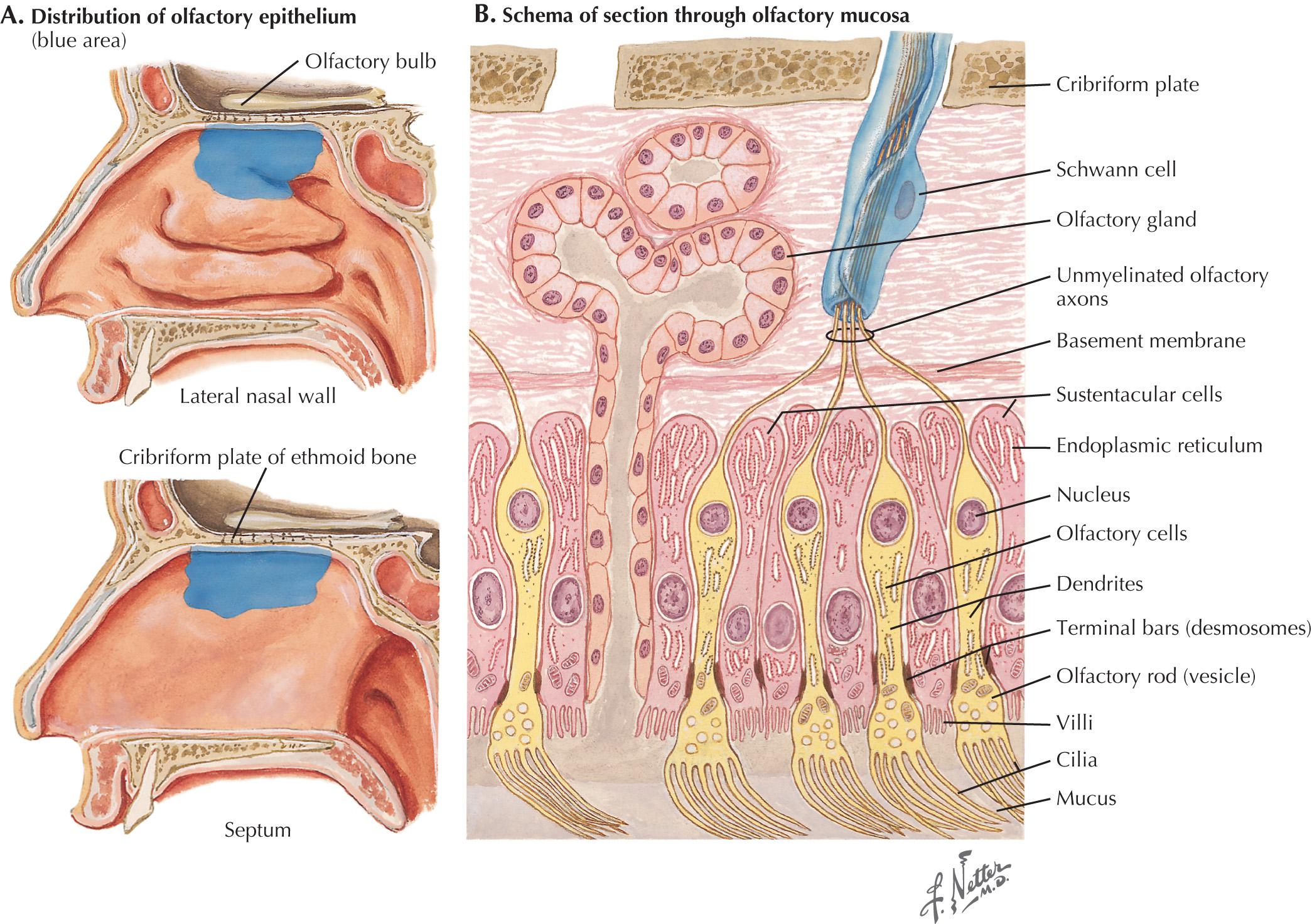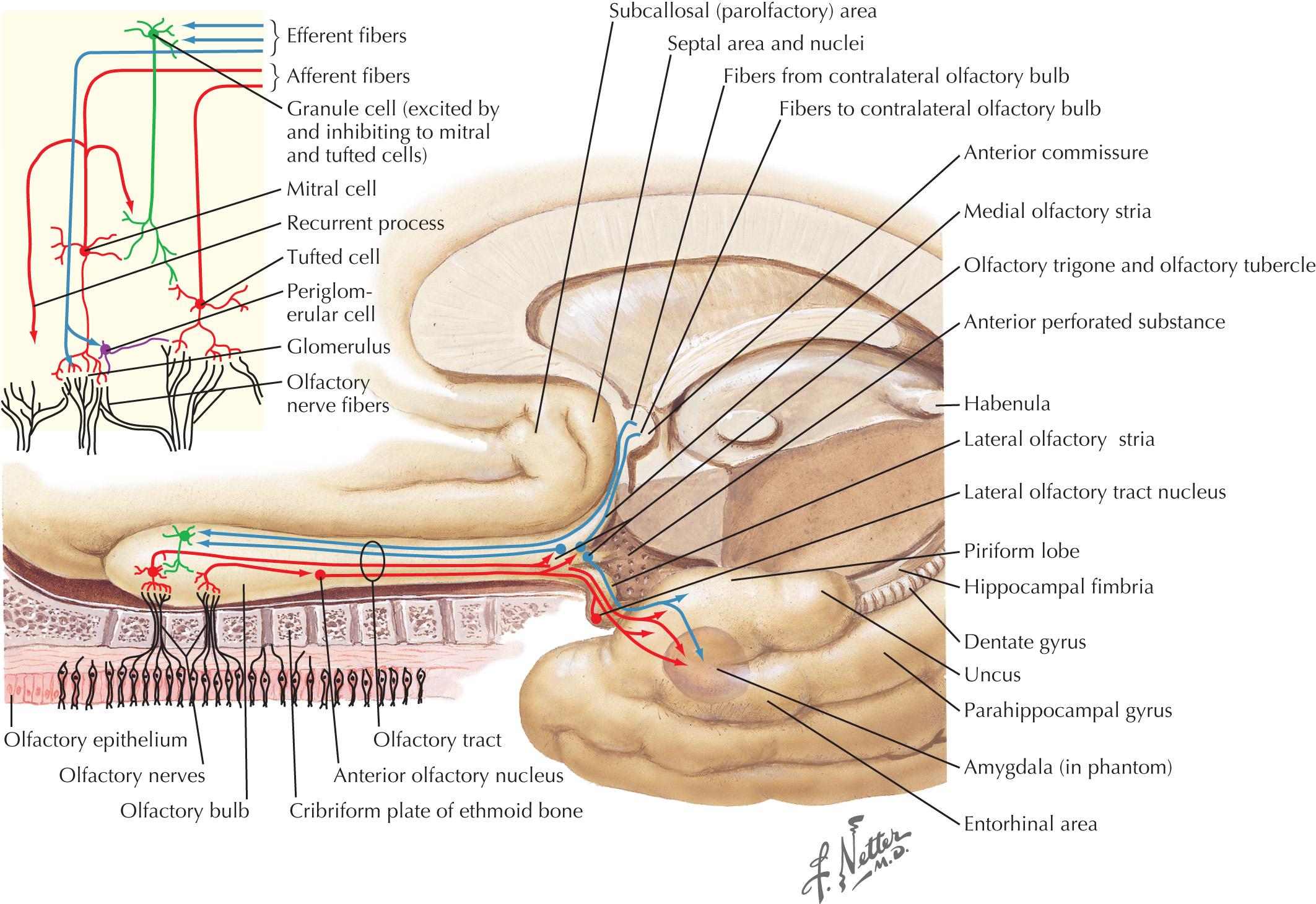Physical Address
304 North Cardinal St.
Dorchester Center, MA 02124
A 64-year-old woman, a retired music teacher and a food and wine connoisseur, was driving to the airport to catch a flight to Spain when she noted she could not smell the characteristic skunk odor her friend was complaining about. She thought it had something to do with her recent cold. While traveling in Spain, she gradually became more alarmed as she realized that she had lost her sense of taste and was unable to distinguish the aromas of different wines. She now believed that her sense of smell had never fully recovered from the cold. She was less sure about her taste because she had limited herself to eating “bland and healthy” foods in the aftermath of the illness. Unable to enjoy food and wine in Spain, and preoccupied about the cause of her symptoms, depression started to set in. She had an appointment with an ear, nose, and throat (ENT) specialist, who concluded after evaluation that she had postviral anosmia. Computed tomography (CT) scan of the sinuses and a neurology consultation were recommended. Within 3 months of the viral illness, her taste gradually normalized. Recovery of her smell was slower and, unfortunately, incomplete. She struggled to distinguish coffee from chocolate, but her neurologic examination was otherwise normal. The neurologist agreed the story was characteristic of postviral hyposmia. On follow-up 3 months later, our patient reported her smell had improved to approximately 70% but plateaued thereafter. A natural optimist, however, she was quick to point out that her smell was good enough to distinguish different wines and that she had begun plans for a trip to Tuscany the following spring.
Comment: Damage of olfactory neuroepithelium during a viral illness is one of the most common causes of olfactory dysfunction in neurologically healthy people. Olfactory dysfunction is commonly accompanied by loss of taste because taste depends largely on volatile particles from food and beverages reaching the olfactory receptor cells via the nasopharynx. A majority of patients improve, but many have residual deficits.
The olfactory nerve (CN I) provides for the sense of smell. Humans rely on proper olfactory function every day. This important sensory modality provides a warning system, enabling the identification of potentially toxic foods or noxious chemicals. Individuals with decreased smell, particularly those who are elderly and live alone, are at increased risk of nutritional problems, such as eating spoiled food, but are also in danger from gas explosion or fire. Smell also contributes to quality of life because this sensory modality provides awareness of many pleasurable sensations, including appreciation of certain foods and beverages, as well as playing an important role in subtle attractions between humans that are important for sexual desire and reproduction.
Smell disturbance is common, and its prevalence increases with age; when systematically tested, it has been estimated that 50% of adults older than the age of 60 years have a decreased sense of smell. Often a patient is not aware of or dismisses as unimportant the loss of the sense of smell. This may be particularly true in an elderly individual with concomitant dementia, as seen in Alzheimer or Parkinson disease (PD), or in an occasional patient with potentially treatable olfactory groove meningioma that compromises frontal lobe function. In such cases, it is essential to evaluate olfactory function by asking the patient to identify familiar odors such as coffee, perfumes or tobacco, or to perform one of the standardized smell tests.
When identifying odors, humans rely on volatile substances entering their nasal cavity to excite receptors. Olfactory receptor cells are bipolar sensory neurons whose dendrites form a delicate sensory carpet, olfactory epithelium, on the superior aspect of the nasal cavity ( Fig. 4.1 ). Basal cells within the epithelium are stem cells that serve as a source of new olfactory cells during regeneration. This unique mechanism, during which the dead olfactory cells are continually being replaced by new ones, represents the best-known example of neuronal regeneration in humans. The thin, unmyelinated axons of the bipolar sensory cells collectively form the olfactory nerve. These axons travel through the cribriform plate into the olfactory bulb at the base of the fronto-orbital lobe. Within the bulb, olfactory nerve fibers synapse with the dendrites of large mitral cells, whose axons constitute the olfactory tract passing along the base of the frontal lobe and projecting directly into the primary olfactory cortex within the temporal lobe. In contrast to all other sensory modalities, olfactory sensation does not have a central processing site within the thalamic nuclei. The human primary olfactory cortex includes the uncus, hippocampal gyrus, amygdaloid complex, and entorhinal cortex ( Fig. 4.2 ).This direct pathway to the cerebral limbic structures may have an important evolutionary function.


Cortical representation of smell is bilateral. Although most of the olfactory tract fibers supply the ipsilateral olfactory cortex, some fibers decussate in the anterior commissure and terminate in the opposite hemisphere. Consequently, a unilateral lesion distal to the decussation rarely produces olfactory dysfunction.
Traditionally, olfactory function is tested by relatively crude methods such as asking a patient to sniff and identify a series of nonirritating odorants (e.g., coffee, cinnamon, chocolate, etc.). Irritating substances such as ammonia are to be avoided because their irritative effects on trigeminal nerve endings can overshadow stimulation of olfactory receptors. Several commercially available standardized and reliable methodologies are available for more precise olfactory definition. The most widely used of these tests is the University of Pennsylvania Smell Identification Test (UPSIT) consisting of 40 microencapsulated odorants. A shorter version, Brief Smell Identification Test (B-SIT) uses 12 common daily odorants such as banana, chocolate, or paint thinner and takes only 5 minutes to administer.
Gadolinium-enhanced brain magnetic resonance imaging (MRI) is the modality of choice for the evaluation of intracranial causes of olfactory dysfunction. Head CT with contrast is reliable when MRI cannot be performed or if a bony lesion of the anterior fossa is suspected. Laboratory studies are not very useful, with possible exception of anti-Ro/SSA and anti-La/SSB autoantibodies in a rare patient with Sjögren syndrome.
Become a Clinical Tree membership for Full access and enjoy Unlimited articles
If you are a member. Log in here